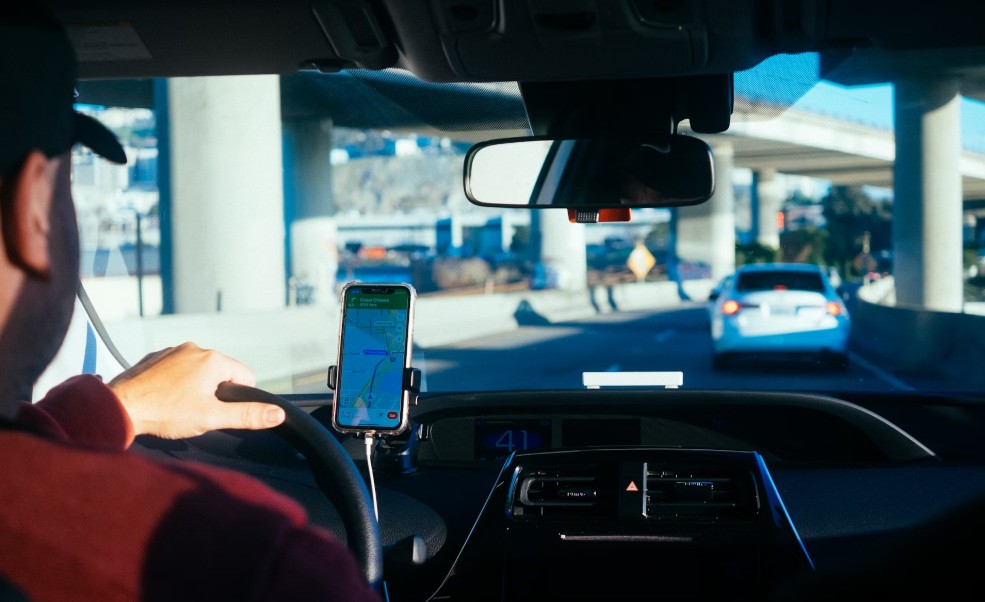The rise of ridesharing services like Uber and Lyft has transformed the transportation landscape, offering convenient and affordable options for passengers and flexible income opportunities for drivers. However, this new mode of transportation has also introduced complexities when it comes to determining liability in accidents. If you’ve been injured in an accident involving a Lyft vehicle, seeking guidance from a Las Vegas Lyft accident lawyer can be crucial in understanding your rights and navigating the legal complexities. Unlike traditional taxi services, where the taxi company often assumes responsibility for its drivers’ actions, the lines of liability in rideshare accidents can be blurred, involving a complex interplay of factors and potential parties.
This article delves into the intricacies of determining fault in accidents involving rideshare vehicles. We’ll examine the various scenarios that can arise, the parties who may be held liable, and the factors that influence how fault is assigned. Whether you’re a passenger, a rideshare driver, or simply someone sharing the road with these vehicles, understanding the nuances of liability in this context is crucial for protecting your rights and navigating the aftermath of an accident.
The Shared Responsibility Landscape
Rideshare Drivers
Rideshare drivers, as independent contractors, bear a significant responsibility for the safe operation of their vehicles. They are expected to adhere to traffic laws, maintain their vehicles in good working order, and exercise reasonable care while transporting passengers. If a rideshare driver’s negligence, such as distracted driving, speeding, or driving under the influence, causes an accident, they can be held personally liable for the resulting injuries and damages.
Rideshare Companies
While rideshare companies classify their drivers as independent contractors, they still play a role in ensuring passenger safety. Companies like Uber and Lyft have a responsibility to screen their drivers, conduct background checks, and maintain certain safety standards. If a company’s negligence in these areas contributes to an accident, they may also share liability. For instance, if a company fails to properly vet a driver who has a history of reckless driving, and that driver causes an accident, the company could be held partially responsible.
Other Drivers
In many cases, rideshare accidents involve other vehicles on the road. If another driver’s negligence, such as running a red light or failing to yield, contributes to the accident, they can also be held liable. Determining fault in these situations often requires careful investigation and analysis of evidence, such as witness testimony, police reports, and accident reconstruction.
Pedestrians
While we often think of drivers as the primary parties responsible for accidents, pedestrians can be legally at fault for causing a crash. If a pedestrian jaywalks, crosses against the light, or otherwise acts negligently, they can share fault for an accident. Even in cases where a rideshare driver is primarily at fault, a pedestrian’s negligence can reduce the amount of compensation they receive. This principle, known as comparative negligence, recognizes that multiple parties can contribute to an accident, and their liability is apportioned accordingly.
Factors Influencing Liability
Insurance Coverage
Insurance coverage plays a crucial role in determining liability in rideshare accidents. Rideshare companies typically provide insurance coverage for their drivers, but the extent of coverage can vary depending on the driver’s status at the time of the accident. If the driver was actively engaged in a ride, the company’s insurance policy will likely apply. However, if the driver was not logged into the app and was driving for personal reasons, their personal auto insurance policy would be primary.
Technology and Data
Rideshare companies collect vast amounts of data through their apps, including driver location, speed, and trip details. This data can be crucial in determining liability, providing objective evidence of the driver’s actions leading up to the accident. For instance, if the data shows that the driver was speeding or using their phone at the time of the accident, it can strengthen a claim against them.
State Laws and Regulations
State laws and regulations also play a role in determining liability in rideshare accidents. Some states have specific laws governing rideshare operations, including insurance requirements and driver qualifications. These laws can impact how fault is assigned and the amount of compensation available to injured parties.
Investigating and Establishing Fault
Accident Reconstruction
In complex accidents, accident reconstruction experts may be called upon to analyze the evidence and determine how the collision occurred. They use physics, engineering principles, and specialized software to recreate the accident scene, analyze vehicle damage, and determine the speed and trajectory of the vehicles involved.
Witness Testimony
Eyewitness accounts can be valuable in establishing fault. Witnesses who observed the accident can provide firsthand accounts of what they saw, helping to corroborate or contradict the accounts of the involved parties.
Police Reports
Police reports often contain crucial information about the accident, including the officer’s observations, witness statements, and any citations issued. While the police officer’s opinion on fault is not always conclusive, it can be a valuable piece of evidence in a liability investigation.
Seeking Legal Assistance
The Role of a Lawyer
If you’ve been injured in a rideshare accident, seeking legal assistance from an experienced attorney is crucial. A Lyft accident lawyer or an Uber accident lawyer North Las Vegas can help you navigate the complexities of rideshare liability, gather evidence, negotiate with insurance companies, and protect your rights.
Protecting Your Rights
An attorney can help you understand the applicable laws and regulations, assess your potential claims, and pursue the maximum compensation you deserve for your injuries, medical expenses, lost wages, and pain and suffering.
Conclusion
Determining liability in accidents involving rideshare vehicles is a complex process that requires careful consideration of various factors. The shared responsibility landscape, involving rideshare drivers, rideshare companies, other drivers, and even pedestrians, adds layers of complexity to these cases. Unlike traditional accidents where fault is often more straightforward, rideshare accidents can involve a web of potential parties and contributing factors, making it crucial to understand the nuances of liability in this context. Such accidents can have far-reaching consequences, impacting not only the drivers and passengers involved but also other motorists, cyclists, and pedestrians sharing the road.
By understanding the factors that influence liability, such as insurance coverage, technology, and state laws, you can be better prepared to navigate the aftermath of a rideshare accident. Remember that thorough investigation is key to establishing fault and protecting your rights. Gathering evidence, securing witness testimony, and consulting with experts, such as accident reconstruction specialists, can help paint a clear picture of how the accident occurred and who bears responsibility.
If you’ve been injured in a rideshare accident, don’t hesitate to seek legal assistance. An experienced attorney specializing in rideshare accidents can guide you through the legal complexities, advocate for your rights, and help you pursue the compensation you deserve. Whether you’re a passenger, a driver, or a pedestrian, understanding the intricacies of liability in rideshare accidents is essential for protecting your interests and ensuring a fair resolution.


